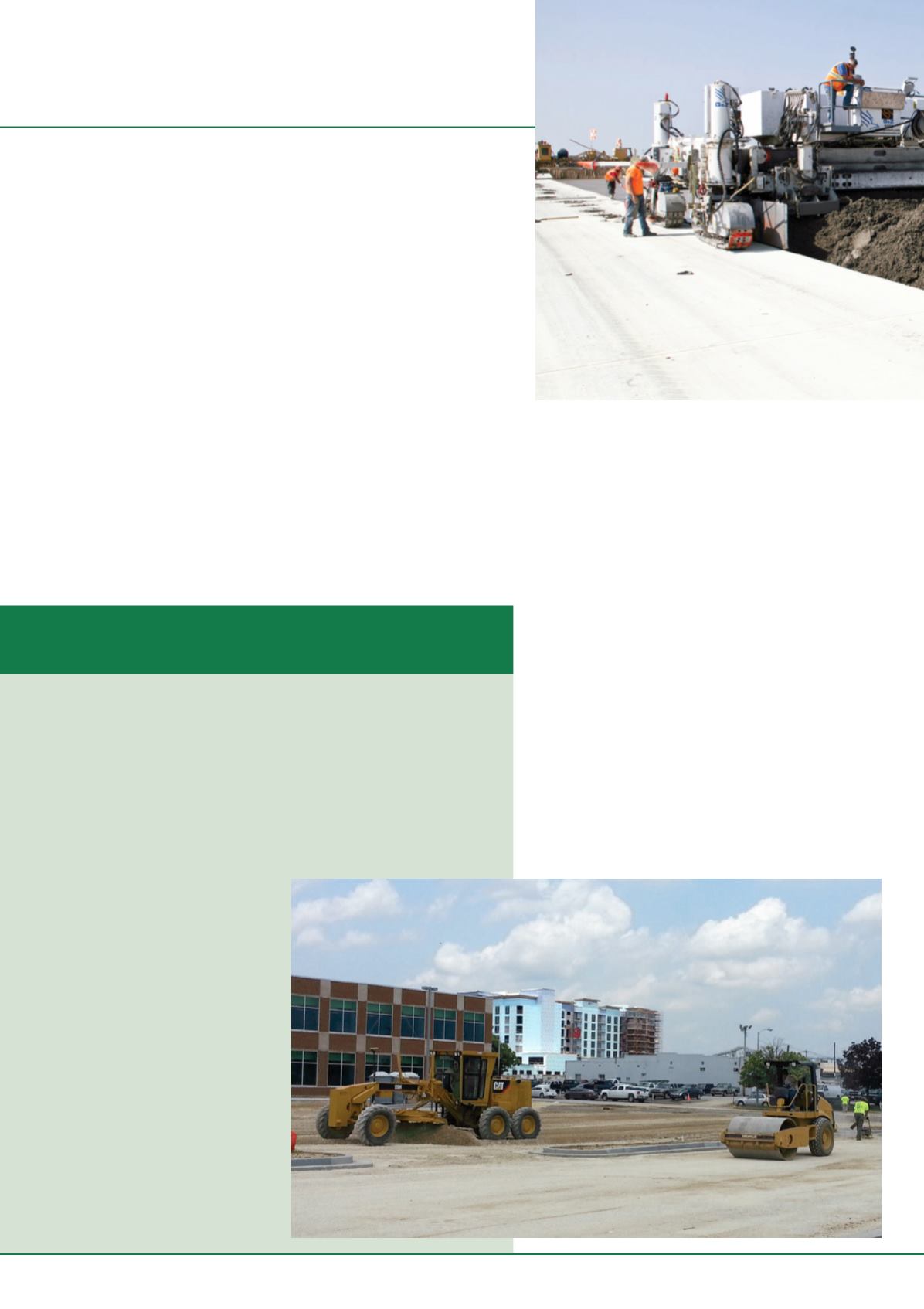
22
REGIONAL REPORT: NORTH AMERICA
international
construction
september 2013
On the recovery trail
But overall privately-funded construction in the US is growing
at about +10% per year at present.
It is a different story in the public sector, which accounts for
about a third of US construction output. Here budget cuts
are seeing almost all sectors of the industry decline at a rate of
about -9% per year. There are a few bright spots, most notably
construction related to transportation and power, but otherwise it
is a bleak picture, with most sectors seeing double-digit declines.
This includes the largest area of publicly-funded construction,
the highway and street segment. In the 12 months to June this
year the value of construction put in place was down -12.4% to
US$ 75 billion, from US$ 86 billion a year ago.
Highway funding
The problem the sector faces is the lack of a stable long-term
funding mechanism for road building and maintenance. Recent
years have seen a series of short-term funding bills being enacted,
often punctuated by a series of short-term emergency measures
and extensions. For example, between the expiry of the 2005 –
2009 legislation and the signing of a new two-year bill in mid-
2012 there were no less than nine temporary extensions to the
first law to prevent road building and maintenance grinding to
a halt.
The issue is not a partisan one. According to Caterpillar group
president Stu Levenick, who is involved in lobbying congress on
S
ite preparation for a new shopping complex in Owensboro, Kentucky, US took close
to 90 days instead of the planned 45 to 60, due to persistent rain. According to
Kevin Grant, project manager with Envision Contractors, the weather was so bad,
that when clear skies appeared the company had to work fast to make the most of the
opportunity.
The project involved adding cement stabiliser to the top 450 mm of the site, which was
formerly a soybean farm and levelling a small hill that provided some 30,000 yd
3
(23,000 m
3
)
of material that was used elsewhere on the project. In addition to levelling the site for the
structures, Envision constructed 247,000 ft
2
(23,000 m
2
) of parking and landscaping around
the building, and a 600-foot (180 m) road extension leading to the facility.
In total, the company moved 85,000 yd
3
(65,000 m
3
) of soil using two Caterpillar
D6N LGP a one D5N LGP dozers. All three
were equipped with Topcon 3D-Millimeter
GPS+ machine control that combines laser
and GPS capabilities. A Cat 120H grader
equipped with a Topcon 3D GPS+ auto
control system was also used on the project.
“The efficiency of the technology
equipped machines is key to our ability to
running productively and achieving exacting
results in one pass. With this project – as
with all of our projects today – there is no
time for errors. Rework is too costly,” said
Mr Grant.
Asked how he would have handled the
project differently without machine control
Mr Grant said, “We’d be losing money on the
project since we’d need two more employees
on the site, another dozer, and all the survey
time. It would take probably +30% longer
without the technology.”
Machine control
GSP guidance speeds up challenging site preparation
this issue, both Republicans and Democrats agree on the need to
put long-term funding in place. “If you would have asked that
question a few years ago, it would have been very different,” he
said. The difficulty is how to put long-term funding in place.
Historically in the US, road building and mass transit systems
have been paid for at a national level from the Highway Trust
Fund. Revenues flow into this from a federal tax on road fuel
– US$ 0.184/gallon (US$ 0.048/litre) for gasoline (petrol) and
US$ 0.244/gallon (US$ 0.064/litre) for diesel. The Fund was
established in 1956 and the current taxation levels were set in
1993 by the Clinton administration.
The reluctance to raise the fuel taxes in the last 20 years – even
though they now represent only about 5% of road fuel costs – has
seen the Fund suffer shortfalls since 2008, requiring injections of
further revenues to keep it solvent. The Congressional Budget
Office (CBO) estimates the shortfall will be US$ 12.6 billion in
the 2014 fiscal year and US$ 14 billion in 2015.
And the long-term outlook for the Fund is not good. Legislation
mandating greater fuel efficiency for vehicles is expected to see the
Fund’s receipts fall some -21% by 2040, according to the CBO.
Another concern is that even at current spending levels, the
country’s roads are deteriorating. Testimony by the CBO’s
assistant director for microeconomic studies, Joseph Kile, in
2011 said that current spending of about US$ 160 billion per
year on highways was some US$ 14 billion less than was needed
to maintain the nation’s road network in its current state. He
Contractor Sherwood Construction bought
a new G&Z S850QB concrete paver for the
replacement of 460 m of Runway 18L-36R at
Tulsa airport. The company said the machine
helped it to complete the job in just 70 days.


